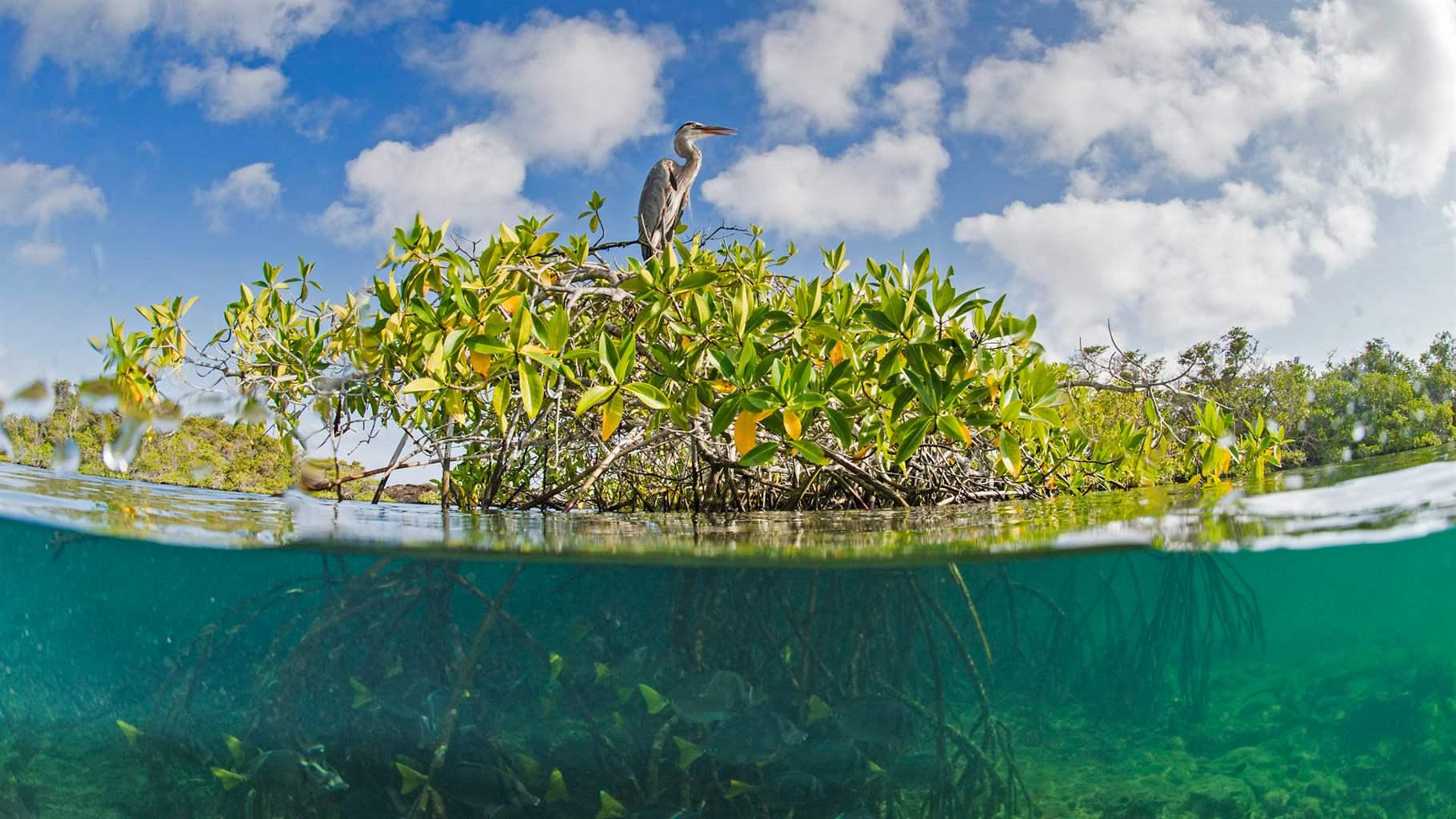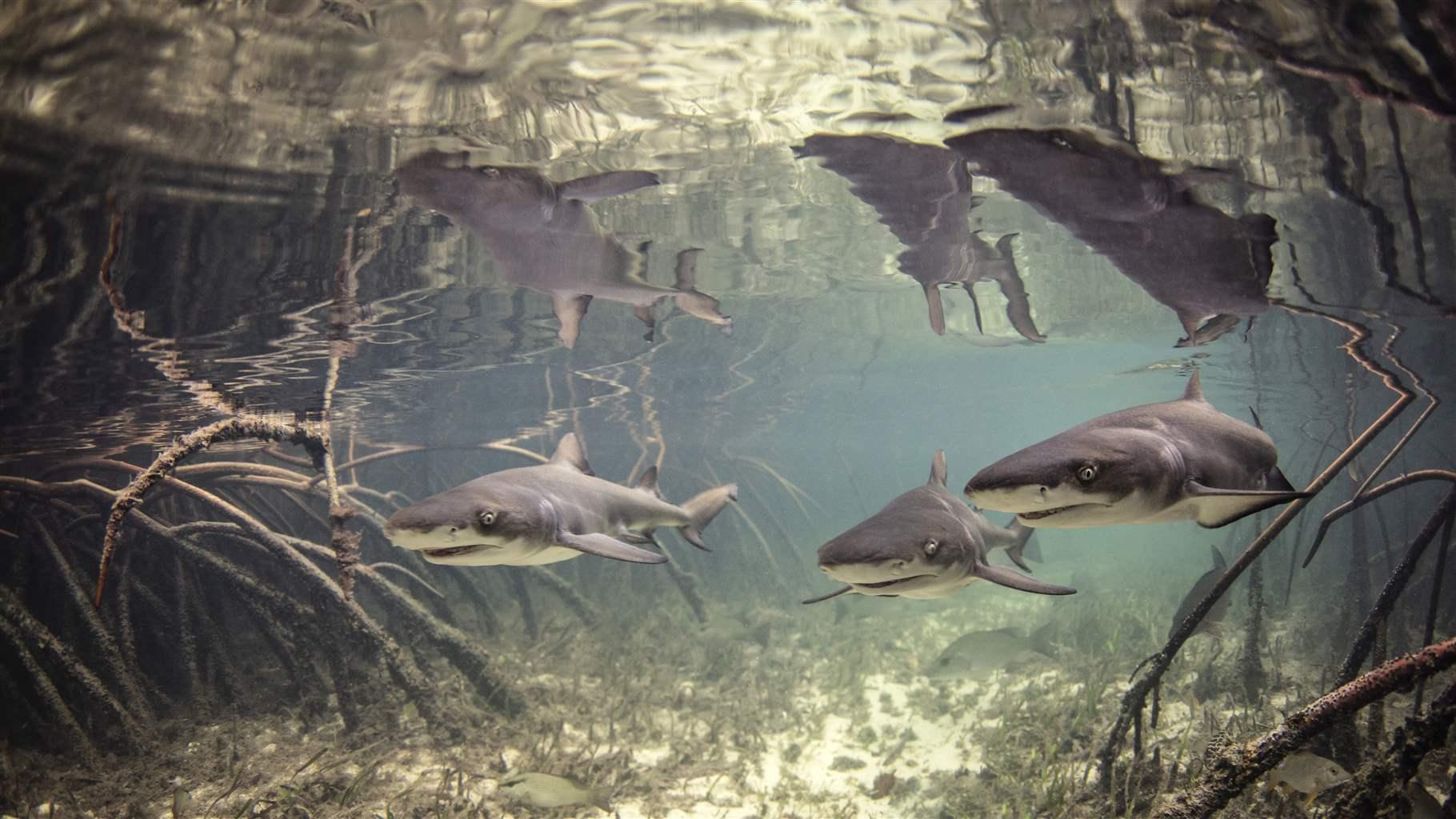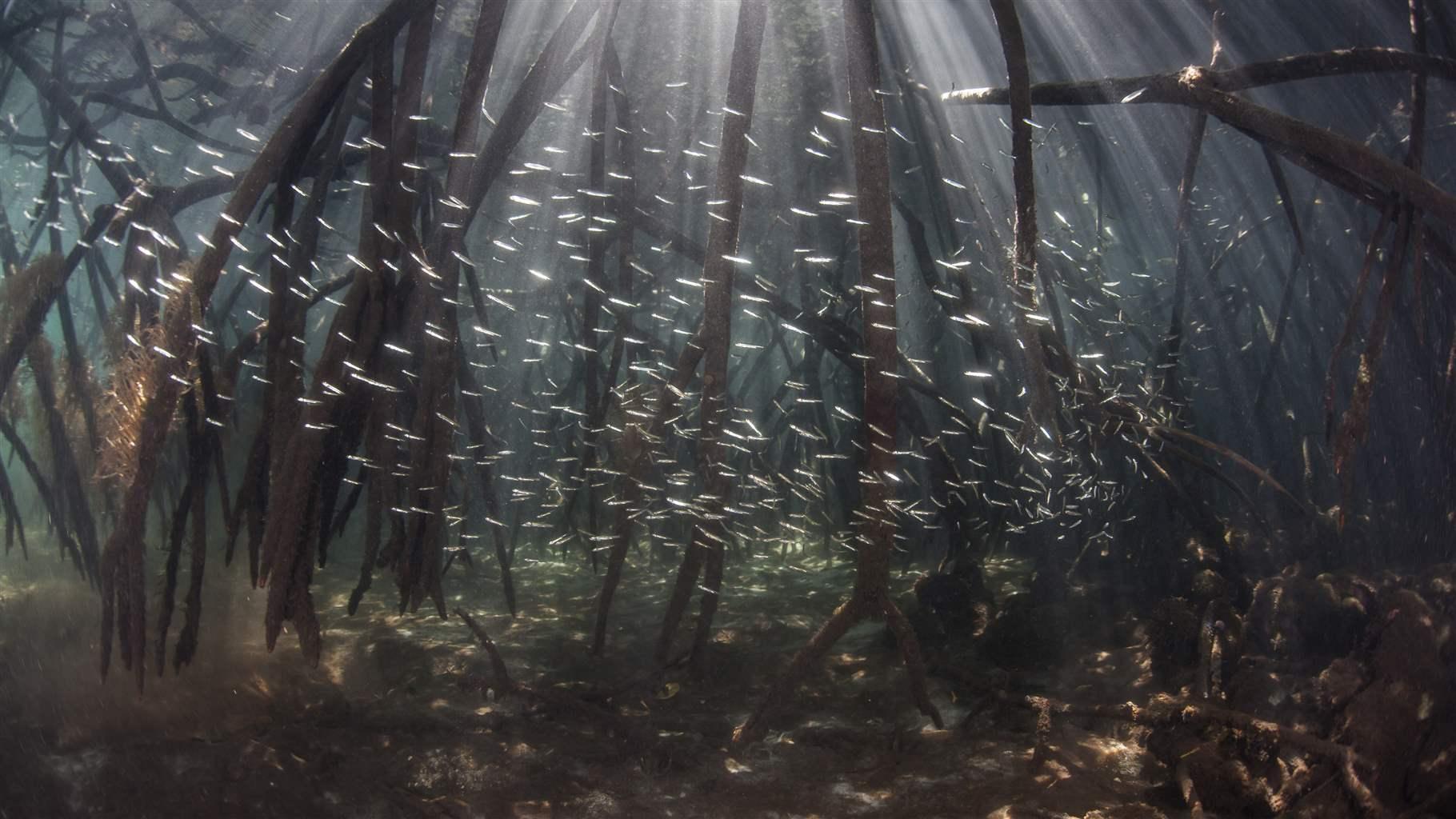International awareness day highlights the many ways these forests safeguard coastal habitat

On July 26, we’ll celebrate International Day for the Conservation of the Mangrove Ecosystem and take the opportunity to highlight why mangrove forests are some of the most valuable ecosystems on our planet. Mangroves range from shrubs to trees—some only a modest 3 meters (10 feet) tall, while others grow to a towering 40 meters (131 feet) or higher. And although species of mangroves within a forest may not be genetically related, they share common characteristics. Their unique biology enables them to thrive in a wide variety of conditions that most other trees would find toxic. They tolerate both high and fluctuating salinity and take root in salty, low-oxygen soils. This makes them ideally suited for the ever-changing coastal environment.
Bridging the gap between land and sea, mangroves are teeming with life. They serve as nursery habitat for many marine fish and invertebrate species that find food and shelter among the submerged roots. Vast numbers of fish, mollusks, clams, oysters, crabs, birds, and other animals make their homes amid mangroves, creating an ecosystem abundant with food for animals as well as humans. Coastal communities rely on this habitat for food security, livelihoods, and recreation the world over.
Although mangroves have great value for their intrinsic biodiversity, they also benefit communities that are working to adapt to and mitigate the effects of a changing climate. Mangrove roots stabilize coastal soils, reducing erosion and flood levels during storms, while forests buffer shorelines from the full impact of waves. These flood protection benefits alone exceed $65 billion per year. Additionally, mangroves absorb atmosphere-warming carbon dioxide and sequester this carbon for centuries in the underlying soil. It’s estimated that mangrove forests store three to five times more carbon in their soil per acre than other tropical forests.
Despite the numerous benefits that mangroves provide, their global decline has been staggering. In the past 50 years, it is estimated that half of the world’s mangroves have been lost by habitat destruction, coastal development, and overharvesting. As a result, these forests are now some of the most threatened ecosystems on Earth.
Although the current status of mangroves may seem grim, there is hope. Countries around the world are taking steps to protect and restore their mangrove forests. International climate policy instruments such as the Paris Agreement provide a mechanism for countries to protect and restore these habitats as a nature-based solution in the global fight against climate change.
The inclusion of mangrove protections in climate policy can be a triple win for countries, strengthening communities’ efforts to adapt to changing environments, mitigating the effects of climate change, and helping to build resilience. These protections also can help ensure that the biodiversity and climate benefits of these critical ecosystems are safeguarded for generations to come.
Stacy Baez is an officer with The Pew Charitable Trusts’ protecting coastal wetlands and coral reefs project.














Đăng nhận xét